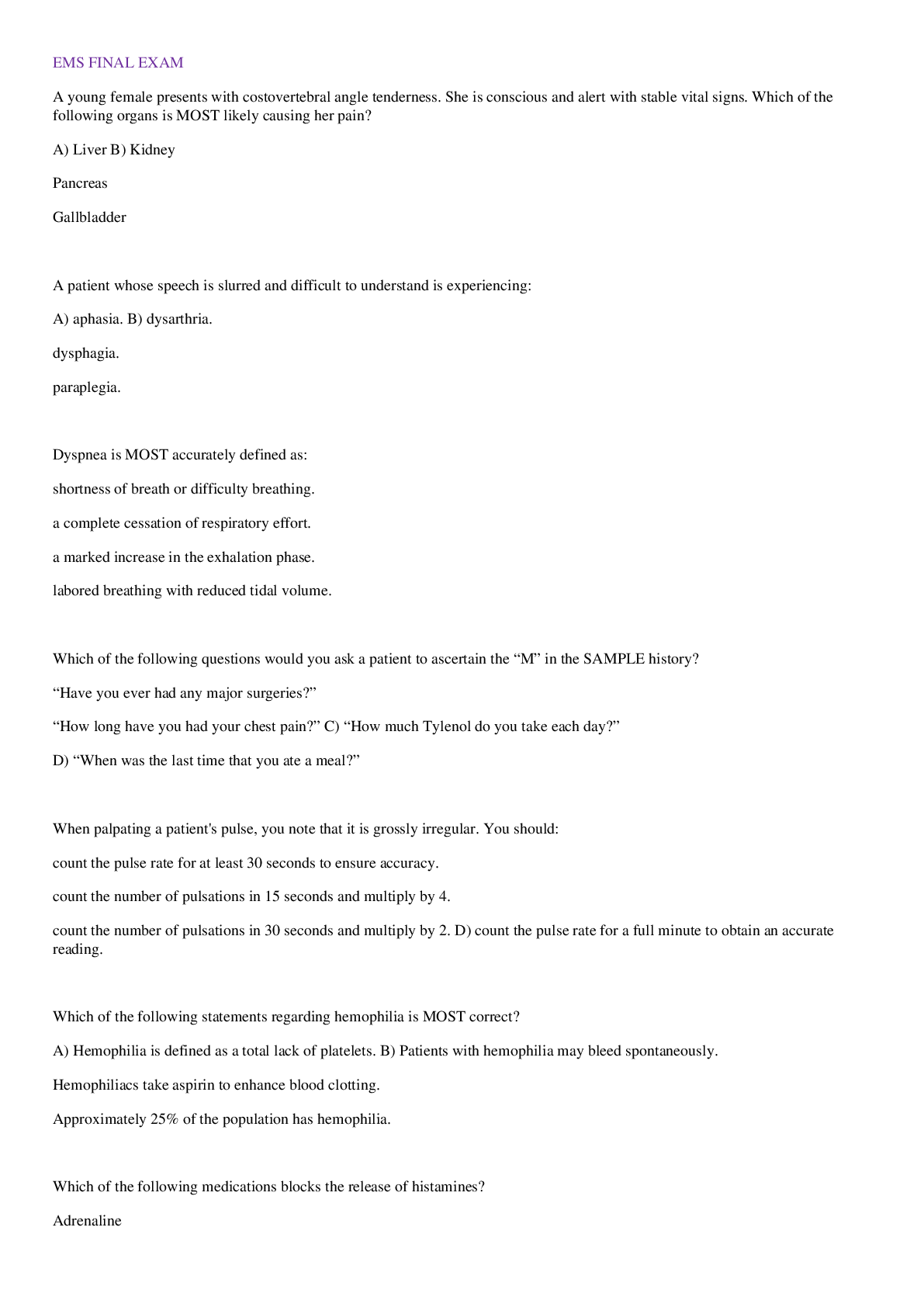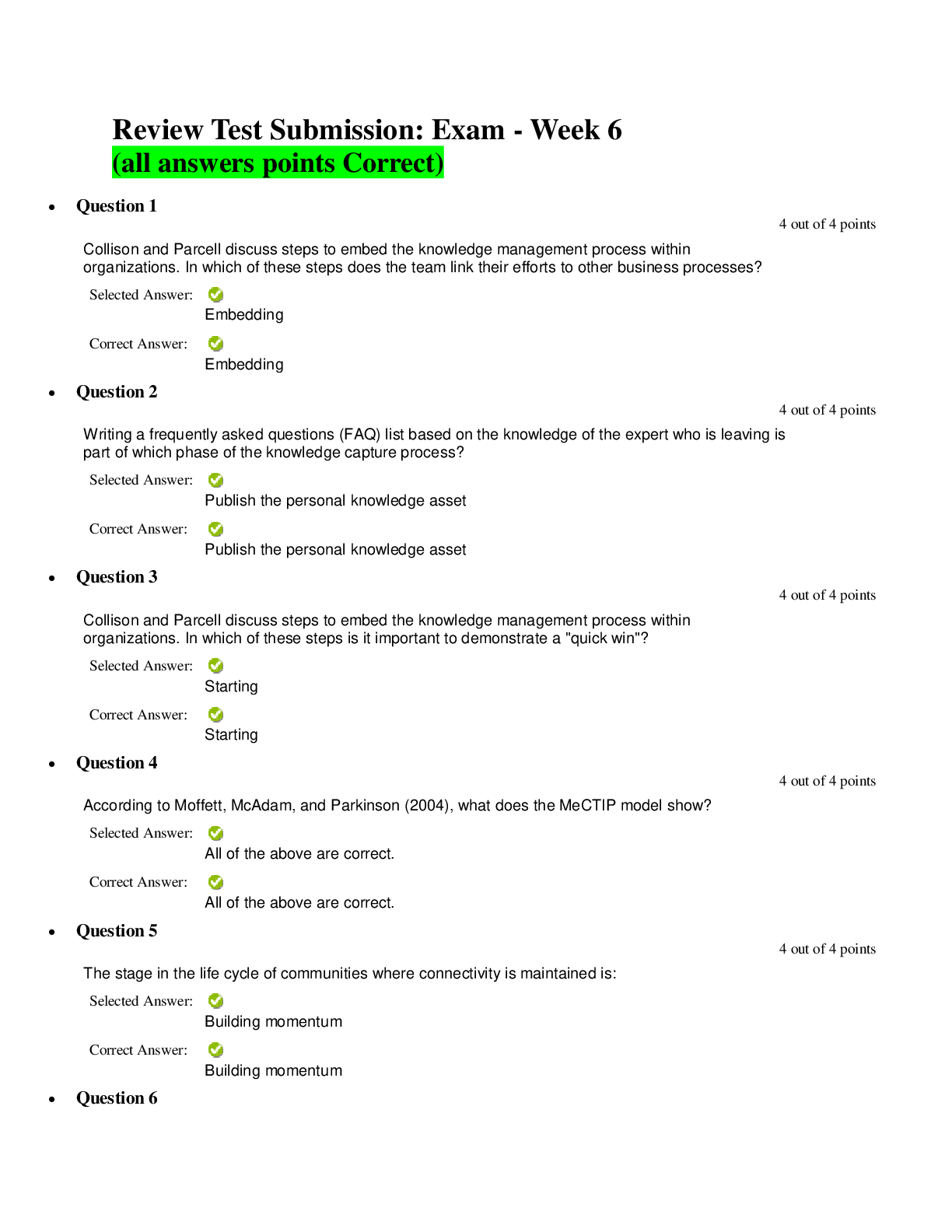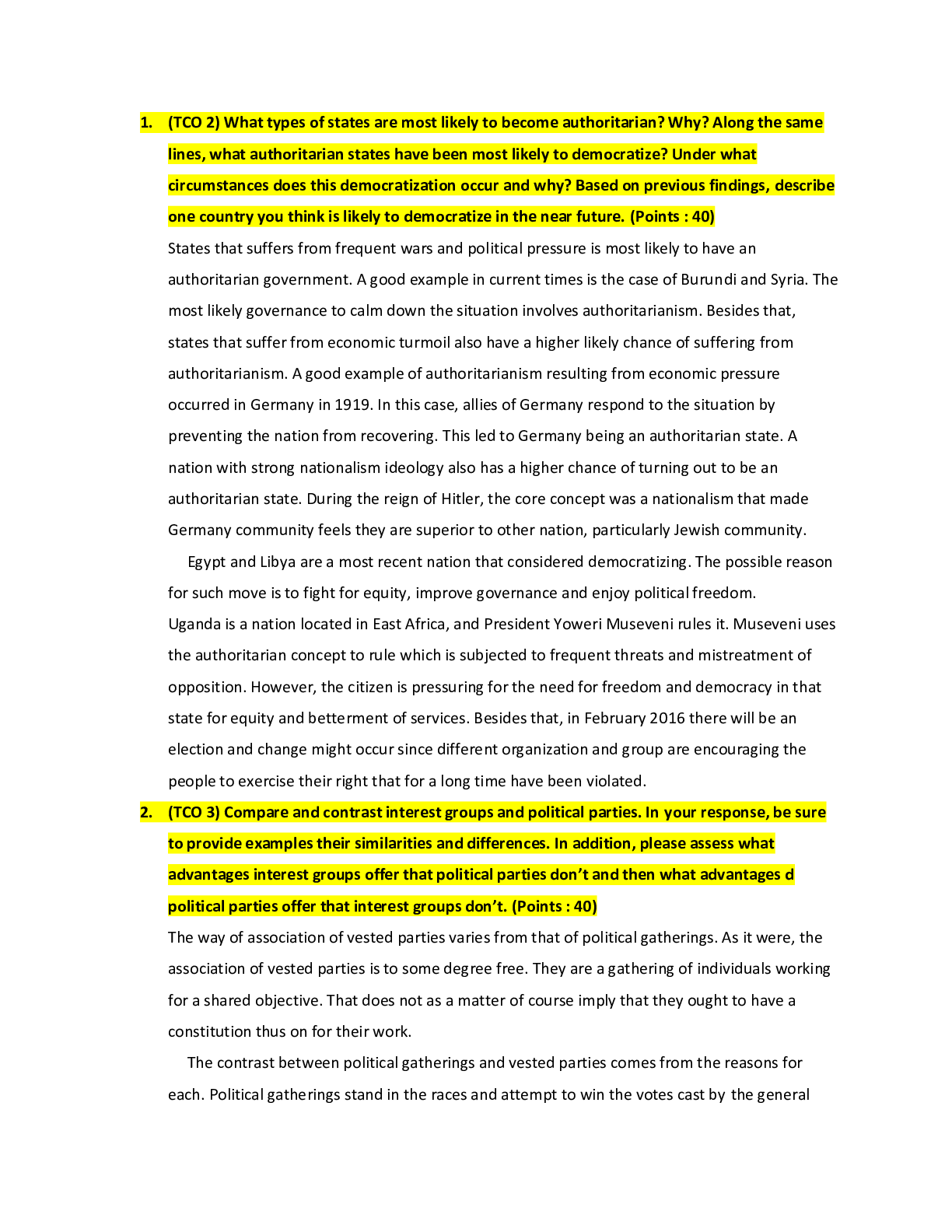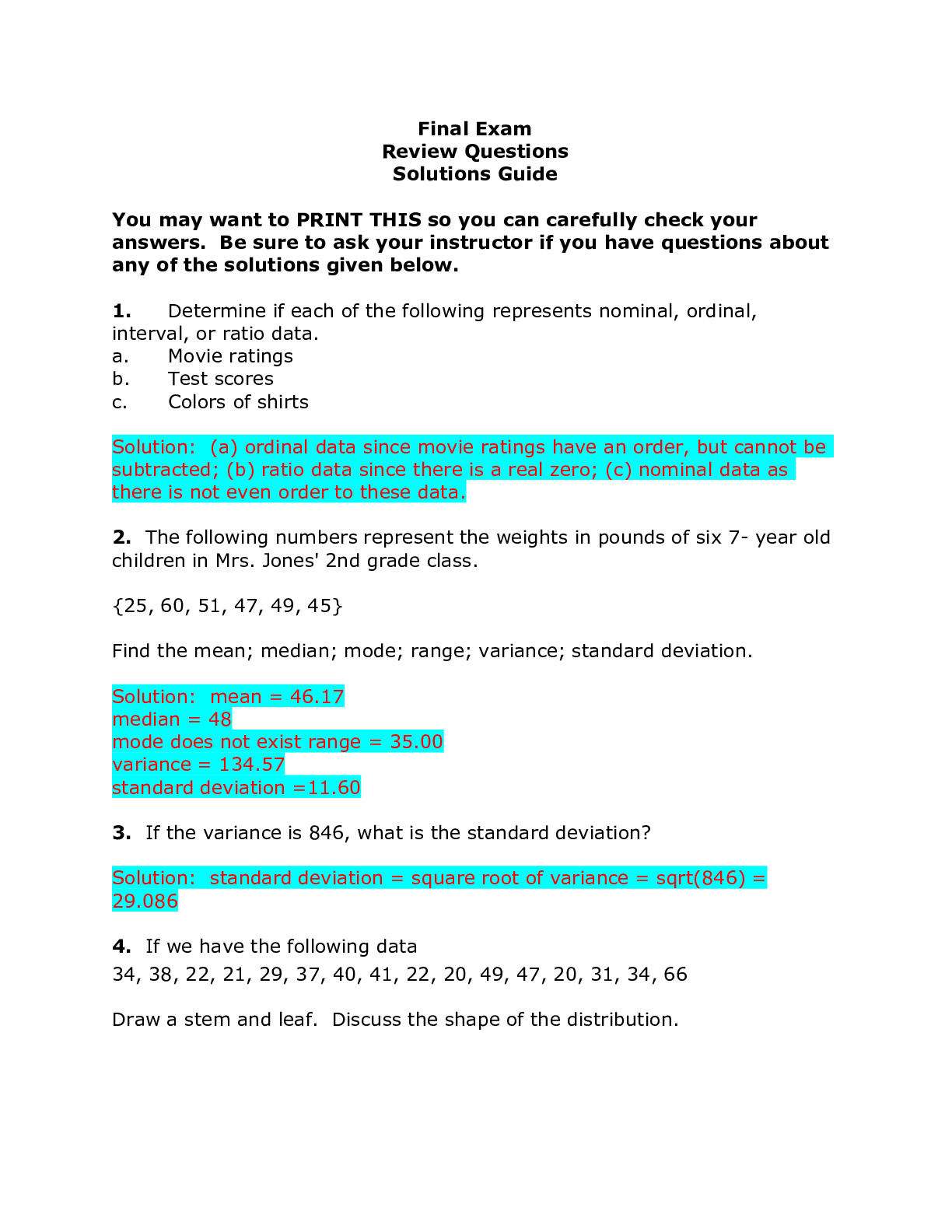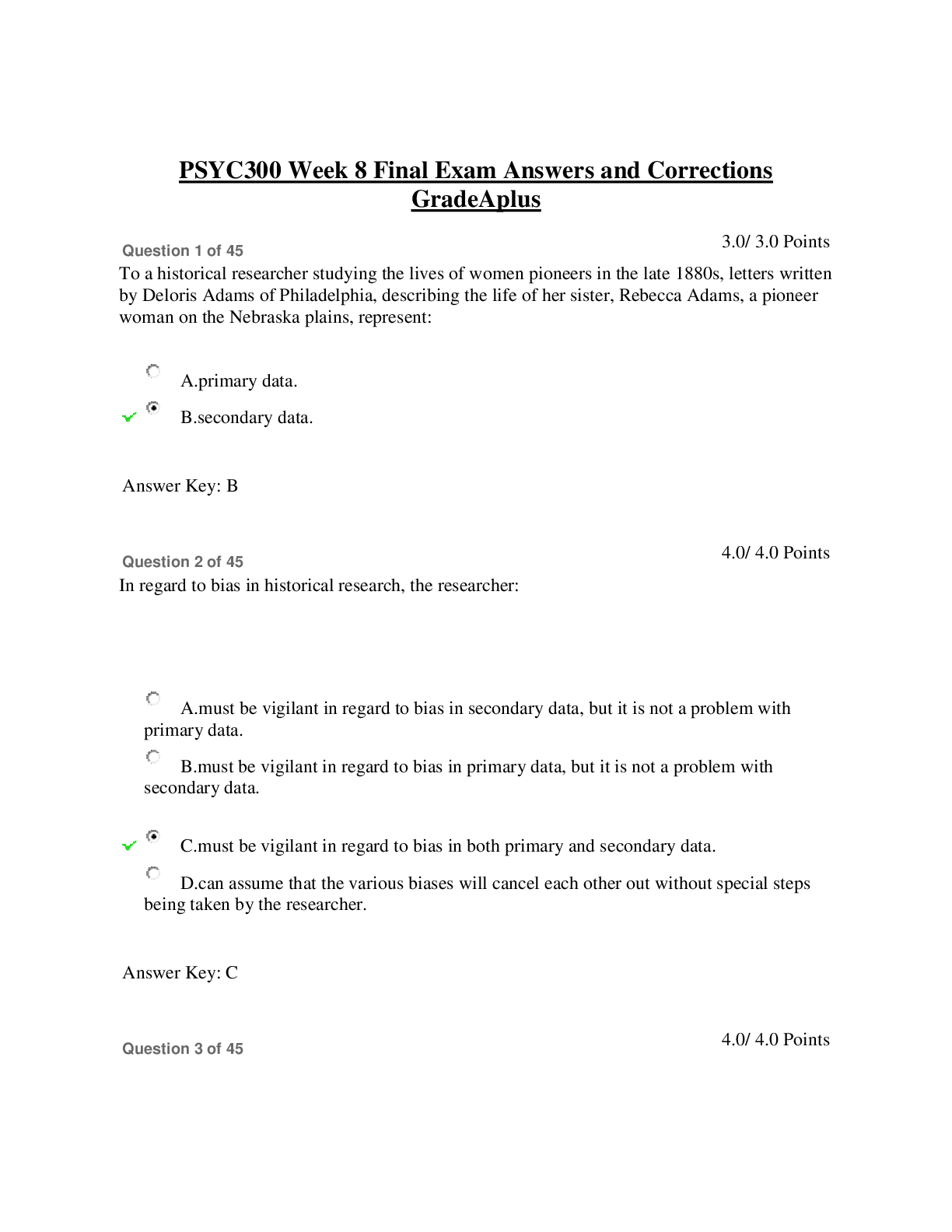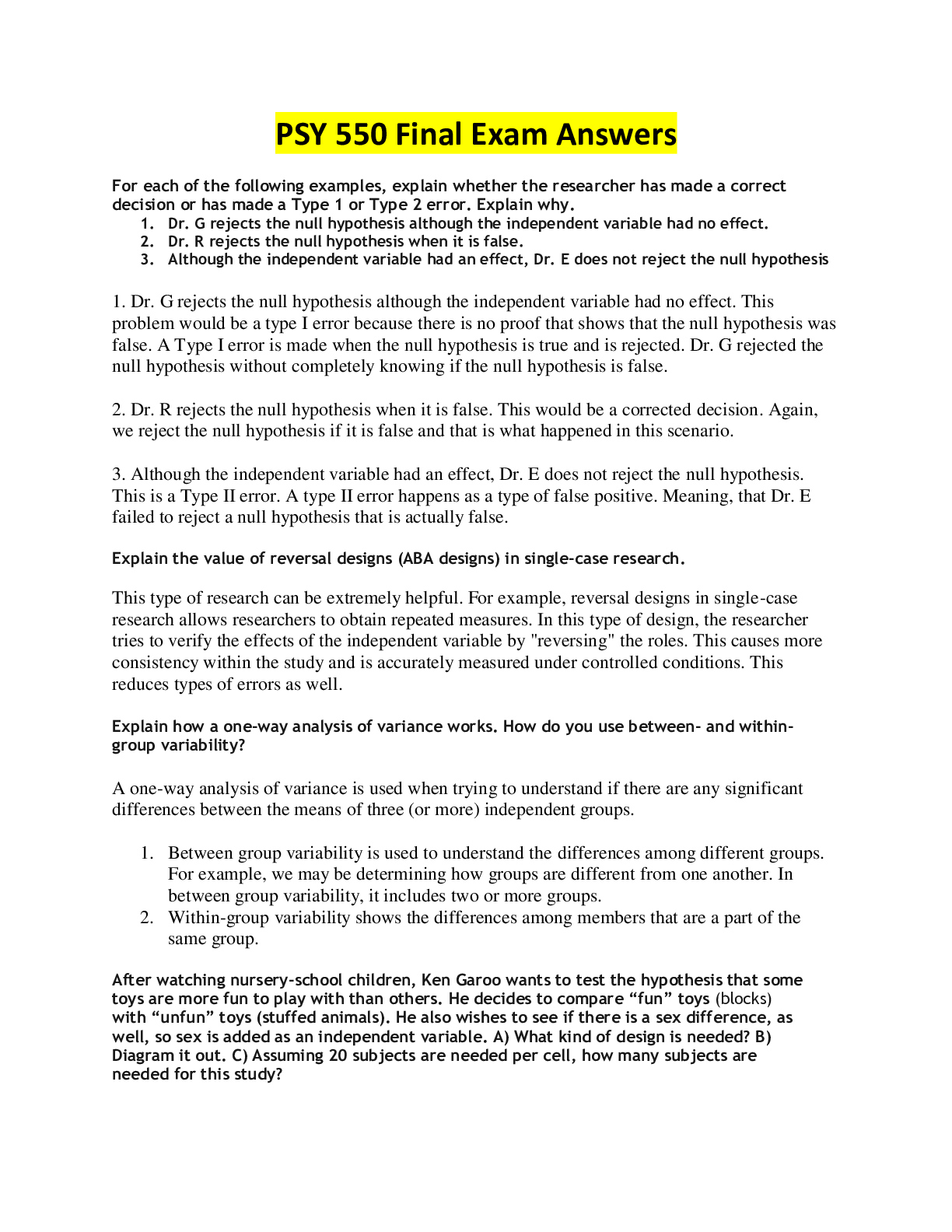NSG 5003 Final Exam Answers (South University Online) 2022/2023|GRADED A
Document Content and Description Below
NSG 5003 Final Exam Answers (South University Online) Question 1 (5 points) Which component of the cell produces hydrogen peroxide (H2O2) by using oxygen to remove hydrogen atoms from specific substr... ates in an oxidative reaction? Question 1 options: Lysosomes Peroxisomes Ribosomes Oxyhydrosomes Question 2 (5 points) What is a consequence of plasma membrane damage to the mitochondria? Question 2 options: Enzymatic digestion halts deoxyribonucleic acid (DNA) synthesis. Influx of calcium ions halts adenosine triphosphate (ATP) production. Edema from an influx in sodium causes a reduction in ATP production. Potassium shifts out of the mitochondria, which destroys the infrastructure. Question 3 (5 points) Which statement is a description of one of the characteristics of apoptosis? Question 3 options: Apoptosis involves programmed cell death of scattered single cells. Apoptosis is characterized by the swelling of the nucleus and the cytoplasm. Apoptosis involves unpredictable patterns of cell death. Apoptosis results in benign malignancies. Question 4 (5 points) During cell injury caused by hypoxia, sodium and water move into the cell because: Question 4 options: During cell injury caused by hypoxia, sodium and water move into the cell because: The pump that transports sodium out of the cell cannot function because of a decrease in adenosine triphosphate (ATP) levels. The osmotic pressure is increased, which pulls additional sodium across the cell membrane Oxygen is not available to bind with sodium to maintain it outside of the cell. Question 5 (5 points) What is an effect of ionizing radiation exposure? Question 5 options: Respiratory distress Sun intolerance Deoxyribonucleic acid (DNA) aberrations Death Question 6 (5 points) Obesity creates a greater risk for dehydration in people because: Question 6 options: chapter 3 q.2 ?Adipose cells contain little water because fat is water repelling. The metabolic rates of obese adults are slower than those of lean adults. The rates of urine output of obese adults are higher than those of lean adults. The thirst receptors of the hypothalamus do not function effectively. Question 7 (5 points) In addition to osmosis, what force is involved in the movement of water between the plasma and interstitial fluid spaces? Question 7 options: a) Oncotic pressure b) Buffering c) Net filtration d) Hydrostatic pressure Question 8 (5 points) Venous obstruction is a cause of edema because of an increase in which pressure? Question 8 options: a) Capillary hydrostatic b) Interstitial hydrostatic c) Capillary oncotic d) Interstitial oncotic Question 9 (5 points) At the arterial end of capillaries, fluid moves from the intravascular space into the interstitial space because: Question 9 options: a) The interstitial hydrostatic pressure is higher than the capillary hydrostatic pressure. b) The capillary hydrostatic pressure is higher than the capillary oncotic pressure. c) The interstitial oncotic pressure is higher than the interstitial hydrostatic pressure. d) The capillary oncotic pressure is lower than the interstitial hydrostatic pressure. Question 10 (5 points) It is true that natriuretic peptides: Question 10 options: a) Decrease blood pressure and increase sodium and water excretion. b) Increase blood pressure and decrease sodium and water excretion. c) Increase the heart rate and decrease potassium excretion. d) Decrease the heart rate and increase potassium excretion. Question 11 (5 points) What causes the clinical manifestations of confusion, convulsions, cerebral hemorrhage, and coma in hypernatremia? Question 11 options: a) High sodium in the blood vessels pulls water out of the brain cells into the blood vessels, causing brain cells to shrink. b) High sodium in the brain cells pulls water out of the blood vessels into the brain cells, causing them to swell. c) High sodium in the blood vessels pulls potassium out of the brain cells, which slows the synapses in the brain. d) High sodium in the blood vessels draws chloride into the brain cells followed by water, causing the brain cells to swell. Question 12 (5 points) A major determinant of the resting membrane potential necessary for the transmission of nerve impulses is the ratio between: Question 12 options: a) Intracellular and extracellular Na+ b) . Intracellular and extracellular K+ c) Intracellular Na+ and extracellular K+ d) Intracellular K+ and extracellular Na+ Question 13 (5 points) In hyperkalemia, what change occurs to the cells’ resting membrane potential? Question 13 options: a) Hypopolarization b) Hyperexcitability c) Depolarization d) Repolarization Question 14 (5 points) Physiologic pH is maintained at approximately 7.4 because bicarbonate (HCO3) and carbonic acid (H2CO3) exist in a ratio of: Question 14 options: a) 20:1 b) 1:20 c) 10:2 d) 10:5 Question 15 (5 points) Increased capillary hydrostatic pressure results in edema because of: Question 15 options: a) Losses or diminished production of plasma albumin b) Inflammation resulting from an immune response c) Blockage within the lymphatic channel system d) Sodium and water retention Question 16 (5 points) [Show More]
Last updated: 2 years ago
Preview 1 out of 18 pages

Buy this document to get the full access instantly
Instant Download Access after purchase
Buy NowInstant download
We Accept:

Reviews( 0 )
$10.00
Can't find what you want? Try our AI powered Search
Document information
Connected school, study & course
About the document
Uploaded On
Nov 22, 2022
Number of pages
18
Written in
Additional information
This document has been written for:
Uploaded
Nov 22, 2022
Downloads
0
Views
36





